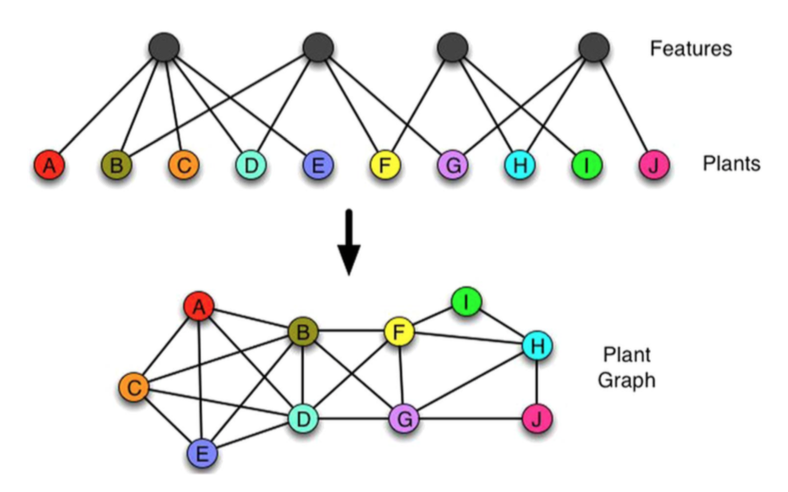Networks of plants: how to measure similarity in vegetable species
Image for the paper "Networks of plants: how to measure similarity in vegetable species"
Scientific Reports 6, 1 (2016)
G. Vivaldo, E. Masi, C. Pandolfi, S. Mancuso, G. Caldarelli
















Despite the common misconception of nearly static organisms, plants do interact continuously with the environment and with each other. It is fair to assume that during their evolution they developed particular features to overcome similar problems and to exploit possibilities from environment. In this paper we introduce various quantitative measures based on recent advancements in complex network theory that allow to measure the effective similarities of various species. By using this approach on the similarity in fruit-typology ecological traits we obtain a clear plant classification in a way similar to traditional taxonomic classification. This result is not trivial, since a similar analysis done on the basis of diaspore morphological properties do not provide any clear parameter to classify plants species. Complex network theory can then be used in order to determine which feature amongst many can be used to distinguish scope and possibly evolution of plants. Future uses of this approach range from functional classification to quantitative determination of plant communities in nature.